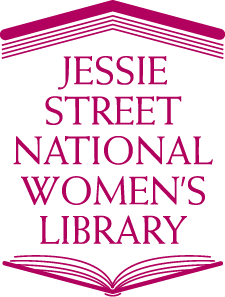Tapestry series no. 13
Contributed by Bess Hayward
The year was 1903. Daisy Peaters was fourteen and lived on Fig Tree farm near Gundagai with her family and Elsley, the left boy, whose parents never returned for him. Her father’s brother Bill now worked the small farm while john had a job in the store in town, and was trying to further his education with lessons from his employer’s wife.
Daisy started her first job as house maid to a dentist. Employed along with her was a part Aboriginal girl whose role it was to help with the Mead’s baby — i.e. to open doors for patients and the dental nurse. Her strong white teeth gave her an advantage over Daisy there because Daisy, possibly because of the depression of the early nineties and the privations experienced in that family in Daisy’s pre-natal and post-natal time, had what she described as a ‘mouthful of rotten teeth.’
In dusting the dental surgery, Daisy experimented with the contents of different bottles and jars, by sniffing or taking a taste. She found that whiskey dabbed on her aching teeth brought relief. This led to her downfall.
Her need for relief from toothache brought her to the whiskey bottle, and in finding relief from toothache she had too much whiskey and became drunk. She was sacked and her father was called to take her home. He dropped her off at home, forgetting that his wife was at a church meeting that day. Elsley was working in the garden. He helped Daisy to lie down and was lovingly attentive. As they were very fond of each other, Daisy in her drunken uninhibited state was quite cooperative as she was taken advantage of.
Elsey asked if he could marry Daisy, but was told to leave the place. His guessed age was seventeen.
The Peaters belonged to the Wesleyan Methodist Church and strongly believed in hard work and high moral standards. John, the father, was a local preacher. Sarah the mother was a church organist and helped out at women’s meetings. Alcohol and gambling were banned. When they found out that Daisy was pregnant they were stricken and felt undone. Daisy was crossed off the Church Roll.
But her family stood by her. She had two older brothers, one older sister, and two younger brothers. Andy the older brother was training to become a minister.
In the course of time Daisy was put on the train to Sydney, to have the baby in The Salvation Army home for unwed mothers. ‘You must leave the child in Sydney,’ her mother whispered before she left. Strong-willed Daisy brought her baby son back home, calling him Ernie. Again the family stood by her, with the absent ones sending her money to have her teeth fixed up. At age sixteen Daisy had all her teeth out and replaced by dentures.
Ernie sucked his thumb and steps were taken by Daisy’s sister Susannah and her mother to stop this. Daisy resented the interference of others in many ways as she tried to care for her child
When she was seventeen her brother Enoch took her and Ernie for a drive in the sulky to the river. There by the river Daisy sensed the softness of the moonlight. On one side of her was her strong, loyal brother who was only too aware of the problems she was facing. On the other side was the little boy who was totally unaware of the conflict he had brought into her life. Her father did not seem to like Ernie.
It was after the funeral of a neighbour, Herbert Passlow and his two little daughters, all of whom had died of typhus, that John Peaters showed love and appreciation for Ernie.
Daisy took work as a part time cleaner at the Gundagai Hospital, but leaving Ernie with Sarah was most unsatisfactory. Then she accepted a job in Sydney to care for an elderly lady. She took Ernie with her. She attended the Wesleyan service, only to be frozen out because of her unmarried state. At the Salvation Army meetings she was made welcome. This was all satisfactory, until the patient died of old age and Daisy returned to Gundagai.
Andy was appointed as minister to Leedsville Church, which was on the north coast of NSW. He put it to the family that all except Daisy should move to Leedsville.
He was a bachelor, and would appreciate having his mother in the Parsonage. ‘Dadda’ could get a job in the store and the boys could find work in the timber industry, Susannah could find domestic work, and they would take Ernie, officially adopting him, therefore leaving Daisy the house at Gundagai, and a job to go to care for old Mrs Meehan. The stigma of being a child of an unwed mother would no longer affect Ernie, while Daisy could start a life on her own. Daisy sadly agreed and went to work for the Meehans who were Catholics, and with whom, all things considered, she was very happy.
Daisy’s previous experience of nursing elderly people was known to Dr Davidson. He recommended her and recommended to her that she take the job of caring for old Mrs Meehan. The daughter Connie had taken care of her mother but now she needed assistance. Her brother Jack had been an excellent shearer, or ‘gun shearer’, but now he was a shearers’ cook in the shearing season and took jobs of droving etc at other times. The Meehans lived on a few acres just out of town on the other side of town to Fig Tree Farm. Daisy and her family were all letter writers, and so they kept in touch. Daisy also visited her Uncle Bill and Family on Fig Tree
Daisy rearranged the Meehans’ house and had to care for Connie as well at first as she had a boil under her arm and a sty in her eye. Daisy referred to Mrs Beeton’s book for information on what to do in many different situations, as well as having the friendly advice of Dr Davidson.
In the course of time both Connie and Daisy did the farm cooking, made jam talked religion and recipes, had Father Shanahan visit and did some spinning of wool.
As Mrs Meehan weakened in health she imagined she was back in beautiful Ireland, in the days when she was young. When she died, Daisy laid her out as she had been taught by a nurse who laid out her previous patient. But Daisy could not go into the church because she was a Protestant.
Daisy’s dilemma as to what to do next was resolved in the arrangement that she and Connie should accompany Jack when he was cooking for the shearers. They were heading for Booligal, beyond Hay, as the first place to begin their cooking. On the way in the wagon, Daisy saw so much of the Australian landscape and sky that she soon wearied of it. She longed for Ernie, but was glad he had not been there when the camp was over run by a cattle stampede.
A drover who was in trouble with the law was one of the many they’d helped at Hay. They were held up at Hay with floods and then the wet black soil mud was a terrible problem as they tried to proceed. Daisy had a bad experience in a marsh and never got over the dread of having water run over her head.
Daisy did embroidery and crochet work to pass the time. This she had learned from her mother. Her father was very handy with carpentry. While the family were very poor, they were nevertheless well schooled in being clean and tidy. Her mother was a good economical cook. Daisy had not mastered the use of a gun, or learned how to ride a bike or swim as other members of her family had done.
Religion was also a problem. Her church had rejected both her and Ernie. The Salvation Army had made her welcome. Connie did not even encourage her to explore the Catholic faith. Her brother, now a minister, stood by her in all matters. I had earlier thought that she had received the gift of a book ’Mrs Wiggs of the Cabbage Patch’ from a friend, but now realise that the book is in fact in the possession of one of my sisters and the fly leaf is inscribed ‘With a Brother’s love’ So her brother Andy gave her the book. I only knew that letters from him were written to Dear Mrs Wiggs. Her other brothers called her “Wiggs’ which seems to me to be a very affectionate and friendly form of address by brothers.
In-between shearing seasons Daisy took domestic work in Sydney, including an unpleasant job where she wished she had union support, and then she was happy cooking at the Tresillian Home for Mothers and Babies at Petersham. She was a bright, pretty person, short in stature and had a 22 inch waist.
In her experience as a shearers’ cook, Daisy heard much talk among the men of the shearers’ war of the early 1890s and the beginnings of the Labor Party in Australia. She had seven proposals of marriage before meeting and marrying George Brown of Grenfell. I was born to them in 1922, their fifth child. George Brown was a Methodist, so that problem was resolved.

